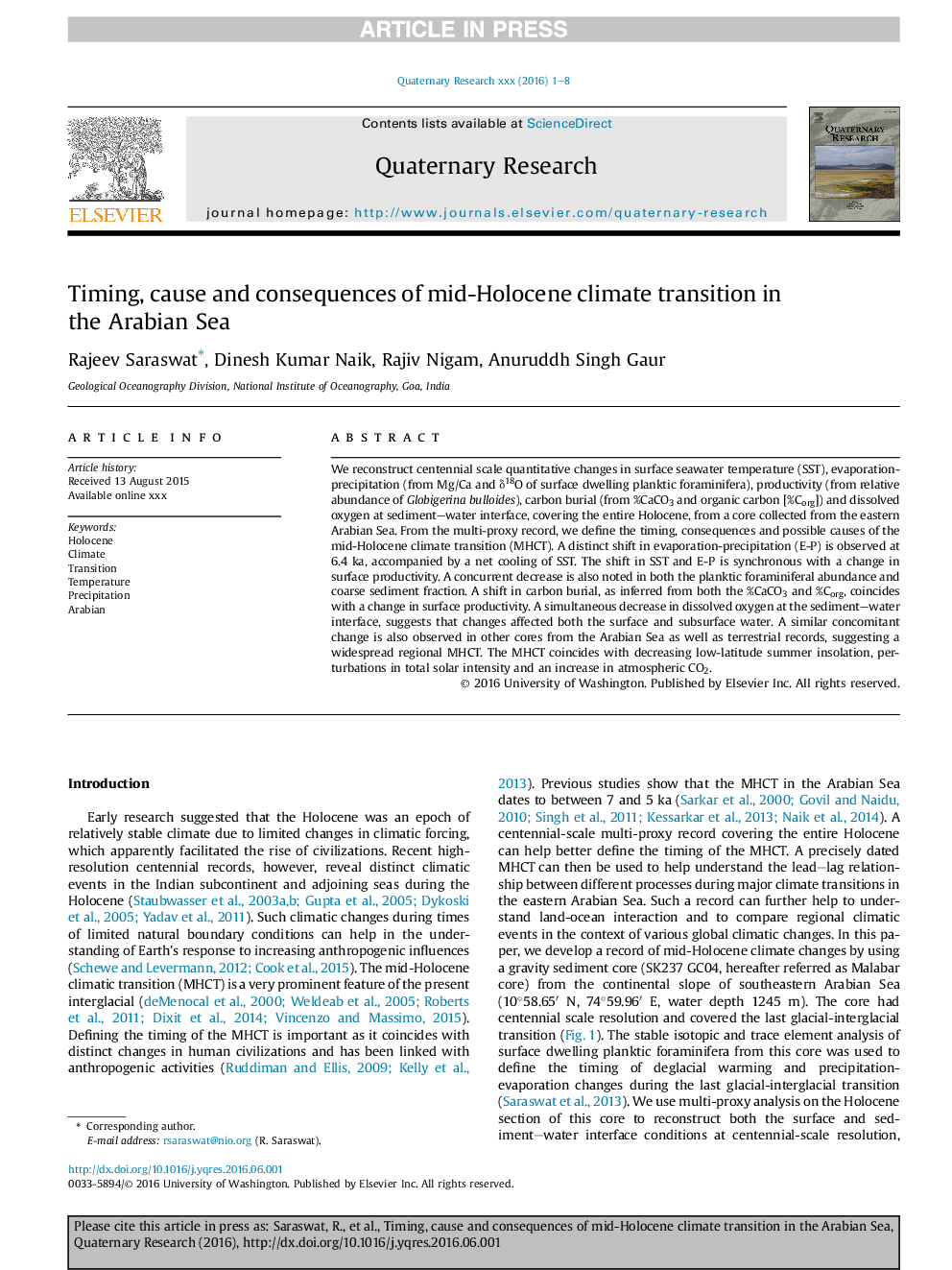| Article ID | Journal | Published Year | Pages | File Type |
|---|---|---|---|---|
| 5114232 | Quaternary Research | 2016 | 8 Pages |
Abstract
We reconstruct centennial scale quantitative changes in surface seawater temperature (SST), evaporation-precipitation (from Mg/Ca and δ18O of surface dwelling planktic foraminifera), productivity (from relative abundance of Globigerina bulloides), carbon burial (from %CaCO3 and organic carbon [%Corg]) and dissolved oxygen at sediment-water interface, covering the entire Holocene, from a core collected from the eastern Arabian Sea. From the multi-proxy record, we define the timing, consequences and possible causes of the mid-Holocene climate transition (MHCT). A distinct shift in evaporation-precipitation (E-P) is observed at 6.4 ka, accompanied by a net cooling of SST. The shift in SST and E-P is synchronous with a change in surface productivity. A concurrent decrease is also noted in both the planktic foraminiferal abundance and coarse sediment fraction. A shift in carbon burial, as inferred from both the %CaCO3 and %Corg, coincides with a change in surface productivity. A simultaneous decrease in dissolved oxygen at the sediment-water interface, suggests that changes affected both the surface and subsurface water. A similar concomitant change is also observed in other cores from the Arabian Sea as well as terrestrial records, suggesting a widespread regional MHCT. The MHCT coincides with decreasing low-latitude summer insolation, perturbations in total solar intensity and an increase in atmospheric CO2.
Related Topics
Physical Sciences and Engineering
Earth and Planetary Sciences
Geology
Authors
Rajeev Saraswat, Dinesh Kumar Naik, Rajiv Nigam, Anuruddh Singh Gaur,
